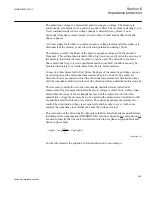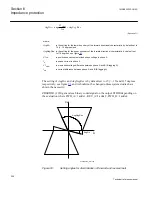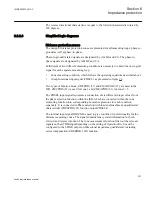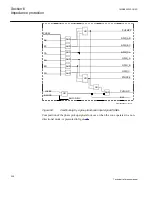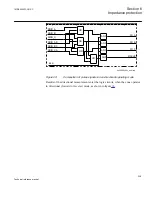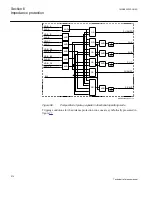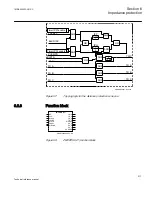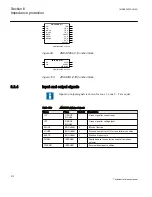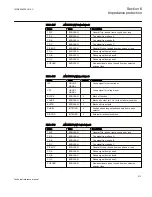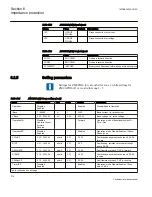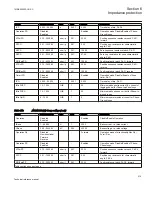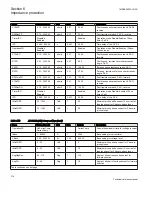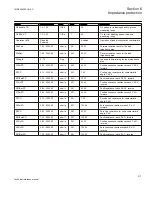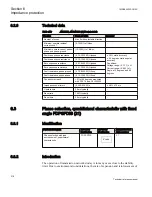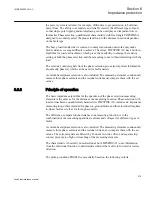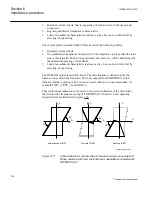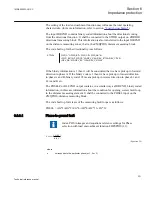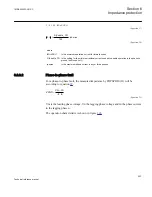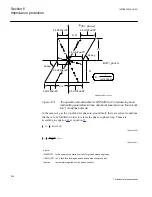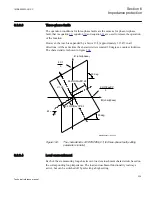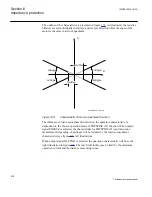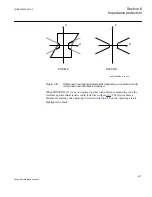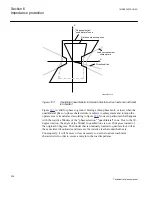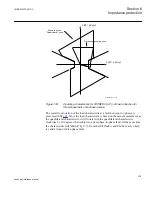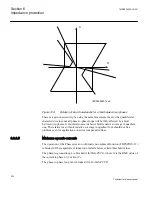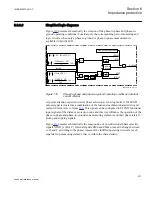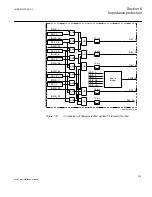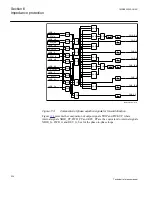
the power system is reduced, for example, difficulties to get permission to build new
power lines. The ability to accurately and reliably classify the different types of fault,
so that single pole tripping and autoreclosing can be used plays an important role in
this matter.Phase selection, quadrilateral characteristic with fixed angle FDPSPDIS is
designed to accurately select the proper fault loop in the distance function dependent
on the fault type.
The heavy load transfer that is common in many transmission networks may make
fault resistance coverage difficult to achieve. Therefore, FDPSPDIS (21) has a built-in
algorithm for load encroachment, which gives the possibility to enlarge the resistive
setting of both the phase selection and the measuring zones without interfering with the
load.
The extensive output signals from the phase selection gives also important information
about faulty phase(s), which can be used for fault analysis.
A current-based phase selection is also included. The measuring elements continuously
measure three phase currents and the residual current and, compare them with the set
values.
6.3.3
Principle of operation
The basic impedance algorithm for the operation of the phase selection measuring
elements is the same as for the distance zone measuring function. Phase selection with
load encroachment, quadrilateral characteristic FDPSPDIS (21) includes six impedance
measuring loops; three intended for phase-to-ground faults, and three intended for phase-
to-phase faults as well as for three-phase faults.
The difference, compared to the distance zone measuring function, is in the
combination of the measuring quantities (currents and voltages) for different types of
faults.
A current-based phase selection is also included. The measuring elements continuously
measure three phase currents and the residual current, and compare them with the set
values. The current signals are filtered by Fourier's recursive filter, and separate trip
counter prevents too high overreaching of the measuring elements.
The characteristic is basically non-directional, but FDPSPDIS (21) uses information
from the directional function to discriminate whether the fault is in forward or reverse
direction.
The pickup condition PHSELZ is essentially based on the following criteria:
1MRK505222-UUS C
Section 6
Impedance protection
219
Technical reference manual
Summary of Contents for Relion 670 series
Page 1: ...Relion 670 series Line differential protection RED670 ANSI Technical reference manual...
Page 2: ......
Page 40: ...34...
Page 50: ...44...
Page 60: ...54...
Page 126: ...120...
Page 384: ...378...
Page 496: ...490...
Page 556: ...550...
Page 602: ...596...
Page 620: ...614...
Page 794: ...788...
Page 864: ...858...
Page 988: ...982...
Page 998: ...992...
Page 1084: ...1078...
Page 1164: ...1158...
Page 1168: ...1162...
Page 1220: ...1214...
Page 1230: ...1224...
Page 1231: ...1225...

